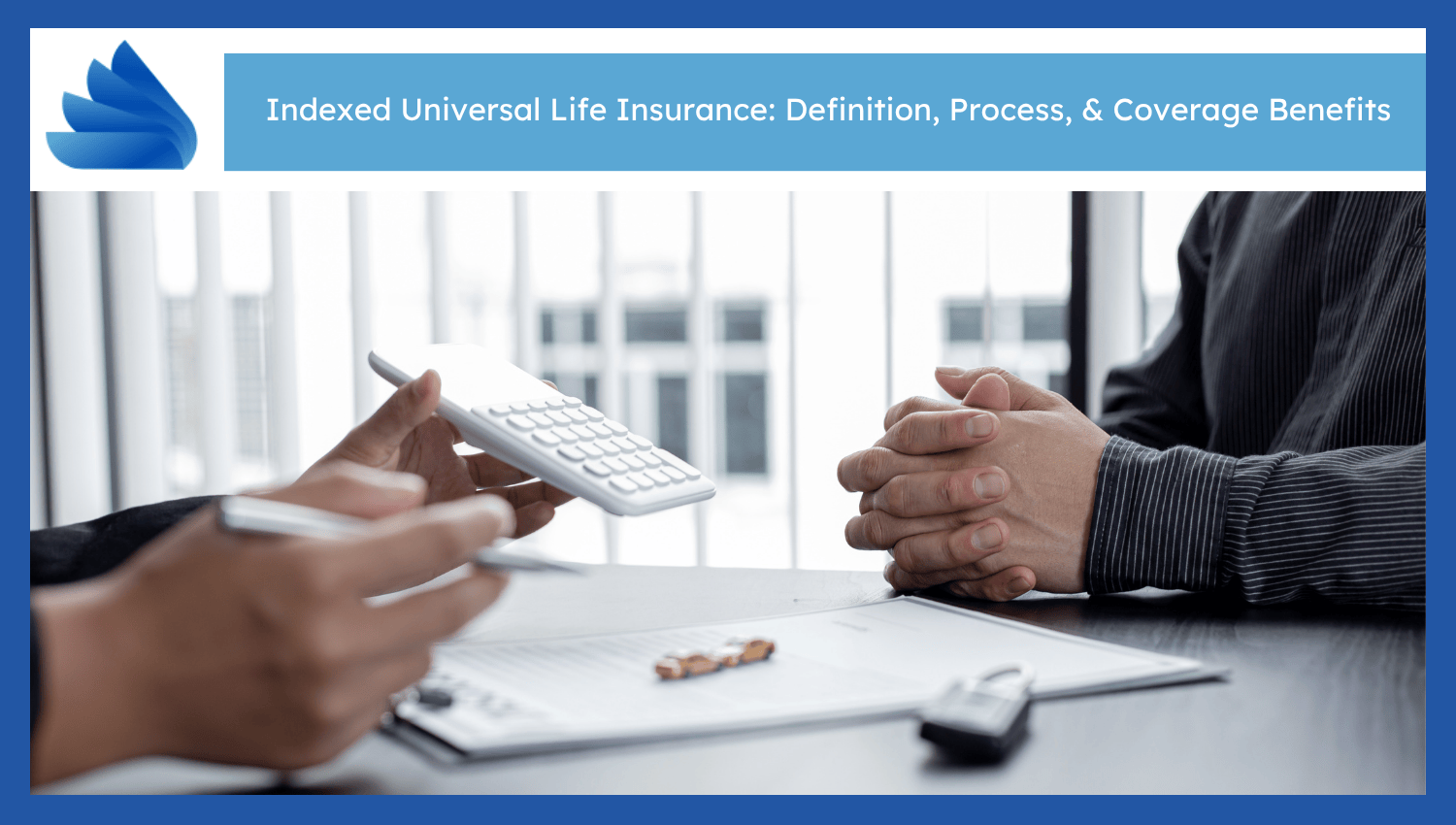
Indexed Universal Life Insurance: Definition, Process, & Coverage Benefits
Indexed Universal Life Insurance (IUL) is a form of permanent life insurance that offers lifelong death benefit coverage with savings and cash value gains over a period. The cash value fluctuates based on the performance of a chosen index, e.g., the S&P 500. The policy makes interest credits as opposed to actual investment in the market through a systematic formula with a cap and participation rate. The cash value is shielded against market losses by a guaranteed minimum interest floor, which is normally 0%.
The cash values are subject to a surrender charge during the first years of an IUL policy (generally between 10-15 years). This charge restricts the rights of the policy-owner to ten percent of the cash values until the insurance company has earned enough premiums to cover the charging costs of the issuing policy.
Academic studies conducted by the Society of Actuaries and DePauw University confirm that the method of credit interest as well as the internal expenses, play a huge role in long-term growth. Adjustable death benefits and flexibility in premiums make the policies even more adaptable but high charges and small returns in comparison to equity investing directly put a dent in the policy efficiency.
Volatility-controlled index performance in the real world of IULs has a history of performing less than half that of the S&P 500, as per the industry statistics. Death benefit stability and tax-deferred growth are also critical benefits that cannot be considered in the case of improperly funded and managed policies.
How Does IUL Insurance Work?
Indexed Universal Life (IUL) insurance has a flexible premium structure just like traditional universal life insurance. The policyholders have an option to raise and reduce premiums as time passes and change the death benefit, with underwriting and policy parameters. IUL is unique in the way interest is credited up to the cash value portion. Upon payment, premiums are allocated first toward the coverage costs and management expenses. The remaining amount enters a cash value account tied to one or more selected market indices, such as the S&P 500. This amount of accumulated cash grows on a tax-deferred basis and is utilized as a policy loan collateral. A remaining balance in the loan at the time of death offsets the amount of the death benefit paid to beneficiaries. The IUL policy design offers lifelong protection, market-linked appreciation, along with financial flexibility.What are the Pros and Cons of Indexed Universal Life Insurance?
Here are the Pros and Cons of Indexed Universal Life Insurance:Pros
Here are the top 3 Pros of Indexed Universal Life Insurance:- Flexible Premiums and Death Benefits: IUL policies allow flexibility in premium payments and death benefit amounts during the policy term. This flexibility supports changing financial needs without requiring a new policy. The cash value also remains accessible through loans or withdrawals, providing financial liquidity without early withdrawal penalties.
- Tax-Deferred Growth and Tax-Free Access: Cash value builds up without immediate tax liability. If structured correctly under IRS non-MEC rules, loans and withdrawals do not trigger immediate taxation. Death benefits are also received income-free, enhancing estate planning advantages.
- Index-Based Growth with Downside Protection: Policy value accumulation tracks a stock index, such as the S&P 500, offering the potential for higher returns than fixed-interest life insurance. A built-in interest floor, usually set at 0%, protects the account during market downturns, while interest caps and participation rates limit gains in strong market years.
Cons
Here are the top 4 Cons of Indexed Universal Life Insurance:- Market Risk Exposure: IUL policies are market risk products despite having a connection to an equity index. The poor index performance restricts growth of cash values, and thus, IUL is riskier than traditional universal life but less volatile than variable life insurance with direct stock investments.
- Rising Premium Costs with Age: Premiums increase over time, especially after age 50, reflecting higher insurance costs as mortality risk rises. Unlike fixed-term policies, IUL premiums adjust according to age and health factors, potentially leading to significant increase in cost.
- Complex fees: Multiple fees affect policy value, including premium expenses, commissions, insurance costs, administrative fees, and surrender charges. These costs often reduce net returns and cash value growth. Outstanding policy loans at death trigger taxable events, and surrendering the policy also generates taxable gains.
- Growth Limitations Due to Caps and Participation Rates: IUL policies limit upside through caps and participation rates, which restrict credited interest even when the underlying index performs strongly. Spreads and other crediting factors further reduce gains, limiting full participation in market upswings.
Who Should Consider IUL Insurance?
Indexed universal life insurance (IUL) is highly recommended for:- Individuals Seeking Long-Term Flexibility and Growth: IUL policies attract individuals who require lifetime protection along with the freedom to make payments and to enjoy cash value accumulation. The policy has a growth linkage with the market index, e.g., S&P 500, and uses interest floors to cover the loss.
- High Earners Maxing Out Retirement Accounts: IUL offers an extra tax shelter to those who max out 401(k)s and IRAs. Cash values net increase without current taxation, and borrowing or withdrawals do not provoke income tax on appropriate planning, which allows long-term wealth accumulation.
- Those focused on Estate Planning: The death benefit of IUL is tax-free, which contributes to legacy planning and the safety of the family. Acquired cash value also provides liquidity in long-term care, healthcare expenses, or multi-generational wealth transfer without implication to outside assets.
- Families Planning for Major Life Expenses: The loan aspect of the policy helps in accessing money to cover education costs, emergency or high costs. These loans are not subject to penalties or taxes in case of the compliant policy structure, unlike traditional retirement plans.
- Business Owners Using Insurance for Strategic Protection: IUL is employed by business owners as key person insurance or in buy-sell arrangements. The ownership changes during the death benefit, and the cash value funds business continuity or executive compensation or liquidity.
- Investors Seeking Growth with Downside Protection: IUL suits persons interested in market-based returns without facing market risk. The crediting strategies provide upside opportunities in periods of growth and guarantee against market loss through the issue of an interest floor.


